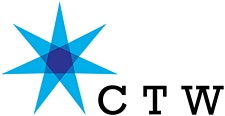Interview by Richard Rodkin.
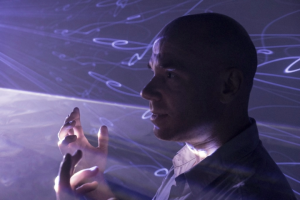
Benton C Bainbridge, one of the busiest and most prolific artists in the Creative Tech space, shares his thoughts on collaboration, new visual synthesis modules, kids and tech, and of course, Creative Technology Week.
Benton C Bainbridge is an American artist known for creating movies, installations, and live visual performances with custom digital, analog and optical systems of his own design. He has performed in museums worldwide and co-founded several live video collectives and is known for pioneering VJing on tours across 5 continents, collaborating with scores of artists around the world. Currently, Benton C Bainbridge is exhibiting new media artworks at movingpictures.gallery
RR: I saw your recent performance with Phil Stearns at the closing of the ETC Retrospective, and thought we could use that as a point of departure, so to speak. You mentioned in the post-performance Q&A that you have been “seeking the video instrument”, something that plays “like the pianoforte”; how close do you think you’ve come to realizing that goal?
BCB: That’s a paraphrase of something Bill Etra always says. Bill Etra has devoted his life to developing the visual instrument equivalent of the piano.
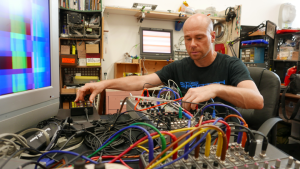
RR: Ah, ok. But that’s something that you’ve embraced as well in your own work, yes?
BCB: Most definitely. But no, I haven’t found The Instrument. I have found many essential visual instruments that have great character and expressive powers, though.
RR: Care to offer an example?
BCB: A few days before the ETC Exhibition performance, I discovered a new instrument.
RR: Do tell!
BCB: Dave Jones, designer of many of the tools from Experimental Television Center – many in the ETC Exhibition – is working on a new Video Synth. It’s being developed as a series of Eurorack modules.
RR: I saw part 15 of your video series online . . . looks amazing.
BCB: One of his modules that Dave hasn’t released yet is called the TABI.
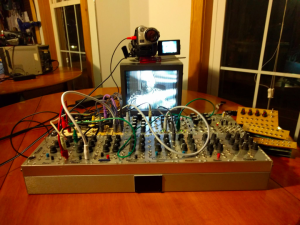
RR: An acronym?
BCB: Yes, “Triple Attenuate Boost Invert”.
RR: Got it. What is it designed to do…what makes it different from other signal processors?
BCB: Its purpose is quite utilitarian. The module is used to attenuate (lower voltage of) a signal, or boost it, or invert it.
This module is actually designed for audio, and control voltages, however I use it for Image Processing. This little bit of circuitry creates an amazing texture that looks like a cross between solarization and multi-pass Xerox copying.
RR: I can guess, but maybe you could explain how it works?
BCB: Well, I actually don’t know how it does the effect! Even Dave was surprised when we tried putting video through the module.
RR: That’s great! When you can surprise the inventor, that really says something.
BCB: Bill Etra says that an inventor can never master his own instrument. Though Les Paul did a great job.
RR: Have you started working with the TABI? Might we see that used as part of what you’re doing for Creative Tech Week?
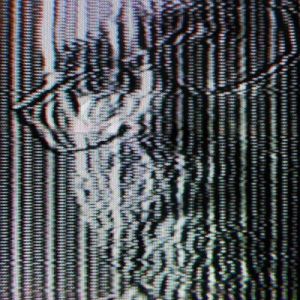
BCB: I have started working with the TABI, including the ETC solo visual performance. It’s already earned a spot in my bag of tricks, so look for it at CTW…
BCB: (Referring to the ETC/Hunter post-performance Q&A session) It was interesting being on that panel, as someone who doesn’t build my own tools from scratch. If anything, I wish I could spend less time building my instrument than rehearsing. I don’t have much patience for building tools from scratch, coding and soldering. I’m able to go further, faster by designing on a systems level, putting together the best components to give me the creative capabilities I seek.
RR: Understood . . . but I guess sometimes that’s what it takes when you’re breaking new ground.
BCB: I really hope to capture qualities of music, painting and poetry in media art.
RR: I think you do . . .
BCB: Having worked with many different artists, I’ve learned that it takes constant practice to become fluent and expressive with one’s instrument.
RR: There seemed to me, at least, to be quite a contrast in your solo performance that night from the others. I thought your performance was more perceivably “musical”, at least in its presentation of form and development.
BCB: Thanks. It was stronger in rehearsal. My shapes were better defined, and the flow was much more clear. I had an abbreviated and challenging setup, due to Holland Tunnel traffic. Still, I had fun!
RR: I remember. The setup was almost a performance in and of itself!
The other feature that I noticed was that you didn’t seem to be “confined” to the horizontal/vertical aspect, which was nice to see. I know you’ve done that in other works, but against the other performances [that night], that quality really came through.
BCB: I find Mondrian to be rather 2-dimensional. Synthesized media art can capture so much more than those shapes.
I have made another series with the TABI module, which I just premiered in a group exhibition. Five live visual performances recorded to VHS tape called “From the Depths“.
RR: Great! Where is that?
BCB: At LDR Studio Gallery in the Bronx.
RR: I saw that listed on your Facebook page. What is the Bronx art scene like these days?
BCB: Small, friendly, supportive. There are excellent artists living and working here in the Bronx. Luis D. Rosado, who runs LDR, takes long exposure digital photos from South Bronx rooftops of abandoned buildings.
RR: You said on your blog that this has been a busy season for you. Have you sensed more of a groundswell these days around Creative Tech in NYC?
BB: The scene here is starting to heat up.
RR: More than usual?
BCB: Most definitely, I see Creative Tech is booming and the interest is growing, as well as the community of people dedicating themselves to creative use of technology.
RR: It definitely feels like some kind of critical mass is happening…
BCB: I feel like we’re at the beginning of a new era.
RR: Yes, and now with Creative Tech Week on the horizon as well. What impact do you think the event might have here? NYC has really never hosted anything like it.
BCB: Creative Tech Week promises to bring together all these many people and groups who are popping up around NYC. They’ll meet each other, and inspire each other. I think a lot of collaborations – and probably some competition! – will come out of CTW.
I think what we’re seeing is that so many building blocks of tech have been created — programming languages, IC chips, mini-computers, sensors, enhanced cameras, the list goes on… that creative technologists are able to come up with wild ideas and make them manifest with much more easy than ever before.
RR: That’s a great point . . . it’s like a complete convergence of media, the one that we were waiting for 20 years ago, but now it’s really happening.
BCB: And, since NYC has always been the social network — before online networks — people meet here and push each other to do great work.
RR: Absolutely. I like your point around collaboration. You seem to thrive on the collaborative aspects of art creation/production. Are you always on the lookout for new relationships and possibilities?
BCB: I’ve applied a musical model to all my creative work since I was a teen. I’m interested in any creative process that allows for real-time feedback. When we collaborate, we benefit from the knowledge and insights of our collaborators.
RR: Beautiful.
BCB: It’s impossible to even keep up with all the new tech, so two or more smart, creative people can often go further than the lone wolf. For me, the dialog is part of the aesthetic.
RR: True, but it often can come down to a battle of egos and wills. So to pull it off successfully and repeatedly is quite an achievement, I’d say.
BCB: A couple generations ago, most people played an instrument. An impromptu jam was a way to get to know people and getting to know yourself better through those encounters. Now . . . well, we don’t all play instruments, but almost everyone is participating in a visual media ‘jam’.
RR: Can you mention one or two of what you’d consider your more successful collaborations?
BCB: I used to work with the same people for many years, deepening a creative relationship over dozens of projects. I’m currently working with many artists and technologists for the first time – like the ETC show with Phil Stearns. However, I recently have been reconnecting with long time collaborators who took time off from their artwork, or pursued other mediums.
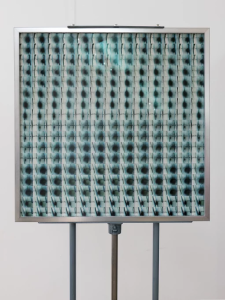
One collaborator I’ve started working with again is Jeff Carpenter. Jeff is a painter who approached me 15 years ago about making my live visual performances into ultra-high resolution lenticular prints. We’ve released an edition of these prints and started making new work together.
I’m most awed that I’ve had the chance to work with Pauline Oliveros on a few occasions; she’s had such a long, innovative career. There are so many other collaborations I’ve really enjoyed and grown from . . . too many to list!
RR: I’m getting that! What’s amazing is that you’ve pushed into so many different areas of expression. And your career and body of work have been exceptionally well balanced, from performing as a VJ, exhibiting in major museums, establishing businesses, and teaching courses at SVA. Not many people have the ability, much less the energy, to successfully branch out into such diverse worlds. Was this part of “the plan”, or more the result of organic developments and opportunities?
BCB: Well, honestly I don’t really have a plan, just passions.
RR: Great answer.
BCB: I’m only going to be alive a century or so; I want to discover as much as possible, and to create as much as possible with the time I have left! The founder of Dropbox said something along the lines of “in my mid-twenties I learned that we only live 30,000 days, and that I had already lived nearly 9,000 of those days, so I stopped worrying about getting it perfect and got to work.”
RR: So maybe that’s a good segue to the next question . . . My son asked me to help him with some Python code he was writing for a school project the other night. He’s 12. I saw that you performed with your son Ezra Bainbridge-Powers, who is 10, and that was fantastic. Clearly, with programs like the STEAM Initiative in our public schools, kids are more tech savvy than ever. Do you have any recommendations for parents out there who might want to nudge their kids in the direction of creative tech?
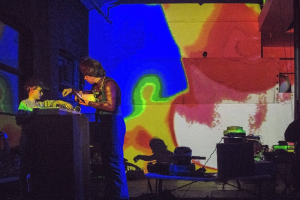
BCB: I don’t think kids can be nudged. Not mine, at least! It’s so funny, Ezra is very smart, and is coming up with inventions already (one truly patent-worthy), yet I have to be careful not to try to push him too much, or he loses interest.
It’s only natural, I can’t help myself.
RR: I think we’re all like that to some extent, kind of why I was asking. I guess in the end we can only make the opportunities available.
BCB: I try to remind myself to just be encouraging, to set a good example, and to warn my son away from the bad things. Also, I think it’s important to try to understand our children from their own viewpoint. Because young kids have different values, assumptions and insights than we do. I think your 12-year-old and my 10-year-old are part of an amazing generation.
RR: Yes, agreed on that! It’s hard to imagine what’s in their heads, though, between the tech and just growing up in NYC. Still, I guess my question was more towards how we get kids exposed to creative tech who might not be otherwise exposed. Ezra is lucky in that he’s growing up in your studio, so to speak.
BCB: I think, honestly, that kids get exposed to so much technology, and so much of that is potentially creative. I do have one thought, which is, we can nurture our children’s natural curiosity, and help them seek out the things they’re already showing interest in.
I have one more thought: take your child for walks in the woods. I think that’s a great foundation for creative technology, having grown up in the country myself.
RR: Do you mean in terms of establishing a balance, and working with certain resources?
BCB: I read this book that changed my awareness of learning, and seeing. It’s called “Crashing Through: A True Story of Risk, Adventure, and the Man Who Dared to See”.
It’s the true story of an entrepreneur who lost his sight at the age of 3, then is given the opportunity to get back vision with new medical technology
RR: How did it change your outlook?
BCB: I learned something that I had a hunch about, but didn’t fully realize. We see with our hands; that’s how we learn to see! So, in the case of this man, even though he regained the sensation of vision, he never learned the “language” of sight and he was miserable and unable to interpret what he saw, because he could not distinguish between a shadow nor the edge of the sidewalk. He couldn’t tell a man from a woman by looking at a person.
RR: I can see how that would change your overall outlook on things.
BCB: He never learned to love the sight of his wife nor children. We learn the language of sight by seeing while touching.
RR: It goes more to being an artist in general . . . learning how to process the world into something meaningful, and new, and different, and how to find a way to share those experiences and realizations.
BCB: Which is why I think we have to take our kids to the woods for their Creative Tech education and insight. I know, that sounds like I’m connecting an IC chip with a sneaker, or something far less probable, but that’s my general message.
Really, I think we should spend more time learning from our kids than trying to teach them.
==========================================================================
Richard Rodkin is a Manhattan-based composer, synthesist, and creative coder. His company, Memetic Arts, Inc., is currently developing an Audio Augmented Reality system called U-GRUVE, which enables composers to create interactive soundtracks for public spaces, and will launch in 2016 during Creative Tech Week.
